How to choose a fan for the bathroom: an overview of
Such a device as a fan for the bathroom - in most cases it is very desirable to install. Such a need is mainly connected with the fact that modern premises of this type are made without windows and air vents, and a standard ventilation channel is often not enough for full ventilation.
And without airing, as you understand, there will be an overabundance of humid air in the room.
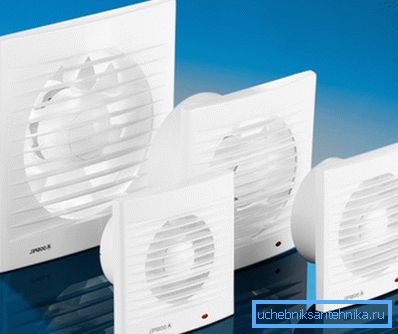
For this reason, rotting (or even deformation) processes in wooden elements can start in the bathroom, unpleasant smells and the like will appear.

Should I endure such discomfort? Definitely not. And why risk the integrity and appearance of the finish, when you can just install a normal bathroom fan and forget about such problems.
It is simple and inexpensive, only here the key problem is to be able to acquire a truly efficient device that will fully perform its functions.
In this article we will examine in detail and as objectively as possible how to choose a device and what criteria to pay attention to. In addition, we will briefly touch upon such a moment as the principle of mounting the product with your own hands - there are nuances everywhere.
Let's start with the most important moment.
Calculation of the required power of the device
This means that before buying it is important to understand how large the room will be able to air the option you like.
This is calculated by a very simple formula - the area of the room is multiplied by the height - the volume of the room in cubic meters is obtained.
Next, the resulting figure is multiplied by the so-called multiplicity - for the bathroom (here takes into account such a feature as a considerable amount of moisture) the optimal value of the multiplicity is from 7 to 9.

That is, for example, if the cubic capacity of a room is 30 meters, then we multiply this number by the minimum in this case, the multiplicity is 7, and we end up with a clear value - the device in this case must “process” at least 210 m3 / hour.
As you can see everything is simple.
Tip: due to the abundance in the market of low-quality Chinese goods, there is a big risk to purchase a product that will not provide the declared capacity. Therefore, it is better to either take a device with more powerful parameters, or buy a product from a well-known, time-tested brand. Even if the price of these options is not as low as we would like, then they, at least, will be able to process the existing volume accurately.
In principle, you can now proceed to the review of the devices themselves.
Types of fans
It is worth noting such an important point as the legality of the installation of devices of this type. The fact is that often the installation instructions automatically imply that the motors will be installed in the common ventilation channel (these are multi-storey buildings).
And this is not always foreseen constructively and is often not allowed by the relevant services, since the safety of the rest of the tenants is at stake.

Therefore, be sure to find out how this situation is in your particular region, home. If no checks are made in this direction and your neighbors have long and quietly been using artificial extracts of this type, it means that you can also install a bathroom fan.
Let's return to the review.
Axial instruments

We can say that this is the simplest version of the products, which has the following features:
- Relatively high level of efficiency. Most devices can safely "turn" about 100 cubic meters of air per hour. For a standard bathroom this is quite a good indicator.
- Low price. The device after all represents an ordinary electromotor on which the wheel with blades is fixed. All this is “packed” in a plastic case - as you can see, the elements of the product are quite simple and, accordingly, simply cannot be expensive by default.
- Installation is a simple matter that even an inexperienced person can handle.. As a matter of fact, it is enough just to fix the device in the vent channel hole and to bring an electrician to it from the switch. In general, it is no more difficult than to connect a chandelier.

These are the benefits.
Note! The disadvantages of such devices are also available. In particular, these are relatively weak pressure characteristics. That is, to put it simply - if you need to “freshen” the air in the room very quickly, then the axial extractor will hardly cope with this successfully, even if it is designed for a given cubic capacity of a room.
In addition, there is also such a "slippery" moment, as an increased noise level, which arises from a running motor. But in general, in most cases, for small rooms - this is a good budget and effective solution to the problem of airing the room.
Now for the more "serious" devices.
Radial devices
They represent a metal case in the form of a "snail", one half of which with the help of a motor and all the same blades sucks in air and, as it were, "sets" direction for it. That is, here the air flow goes up to the main shaft of the ventilation channel - not by itself, as is the case with axial counterparts, but goes where it is needed - under the powerful influence of external force.
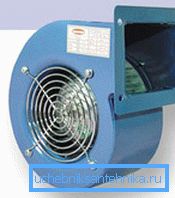
Due to these design features, radial hoods have unique characteristics, which are described in the table below.
| Benefits: | Disadvantages: |
|
|
That is, it turns out that the radial device is a good solution. As for the noise, then, alas, will have to endure. This is better than spoiling the bathroom finish with constant dampness.
Yes, and if you objectively understand, then, in fact, the noise is not so strong - in any case, if you have good sound insulation in your room, then the sound of a running motor will not be noticeable.
By the way, keep in mind that the system usually works 15-30 minutes after a shower visit, and then simply turns off - by itself or with the help of the built-in timer.
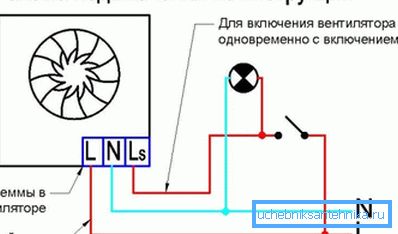
The timer refers to additional options, that is, there are far from all products. In principle, the function is quite useful, convenient.
In addition to the options with timers, you can also find a fairly silent fan for the bathroom with a check valve. This is a device that automatically blocks the passage of air through the grate into the room during the period when the device is turned off.
There are also products on the market with a similar function of blocking the air flow - only there the usual "blinds" perform the role of a ventilation valve. The difference in price options and, of course, is that the blinds will have to be closed and opened manually.
Now let's look at another interesting solution, with which you can properly air a whole apartment.
Centrifugal fans
In fact, it is not even a separate product, but a whole system. The design is a motor with good power, from which the air ducts diverge (the so-called sleeves) into the necessary premises. All elements are usually hidden between the draft and the suspended ceiling of an apartment or house.
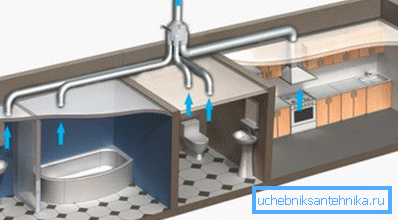
The system has the following features:
- Low noise. This is possible due to the fact that the motor is not located in the area of the ventilation hole itself, but is located, as it were, at some distance from it.
- The ability to ventilate rooms with a large area.
- Excellent fan power that allows you to “organize” fresh air in a room in just a matter of minutes.
As for the shortcomings, it is possible to distinguish such a moment as the high price of both the system itself and its installation services. In addition, and the consumption of electricity here is not very economical.
In general, we can say that this is the best option for bathrooms with a large area and for those who can afford to spend money on installing a good air conditioning system.
There are more expensive solutions - these are roof fans. The motors here are very powerful and are installed on the roofs of buildings. And the principle of wiring is the same - the main sleeves are pulled into the apartments, to which air ducts of smaller diameter are connected.
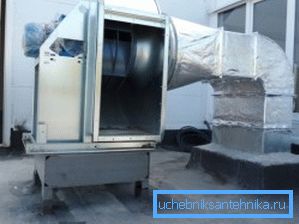
But rooftops are very complex solutions, you can hardly install them yourself, and the budget needs a completely different one. Therefore, in standard situations, in the conditions of arranging only one bathroom - this option is usually not even considered.
Conclusion
We have quite thoroughly figured out how to choose a fan for the bathroom, what is there to pay attention to and what kind of pitfalls can be encountered here. We hope that the information provided will “help out” you in such a difficult task as choosing the best fan.
If you want to learn even more useful, then we recommend to see also our additional video in this article.